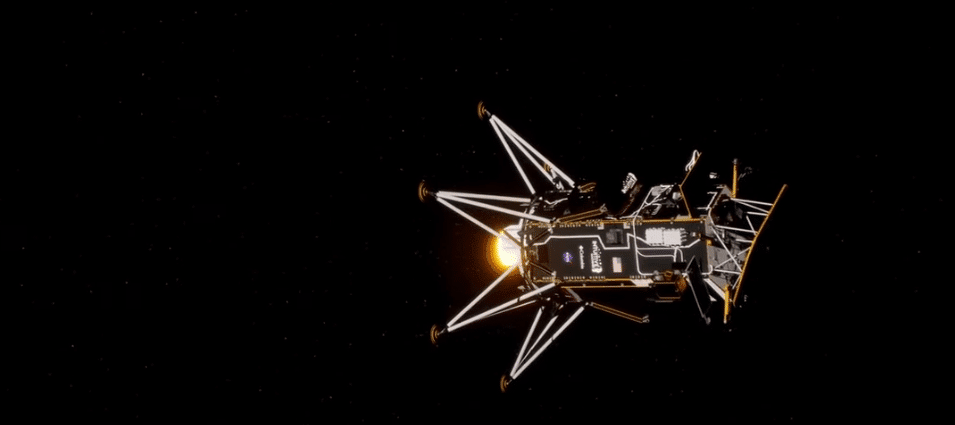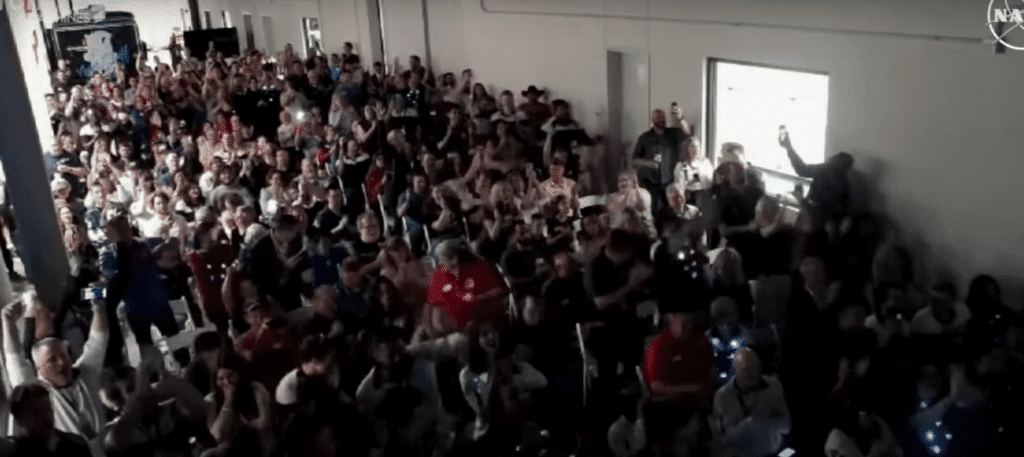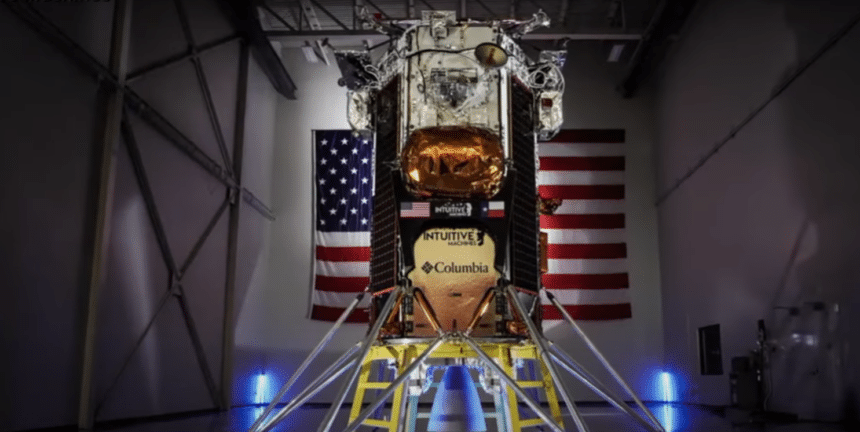The success of Odysseus Moon Landing Intuitive Machines’ IM-1 lander, affectionately dubbed Odysseus or “Odie,” has successfully landed on the lunar surface, marking a significant milestone in space exploration. However, the journey was not without its challenges. Hours before the anticipated landing, unexpected issues arose, creating a tense atmosphere among mission controllers and engineers.

Confirmation of Success Amid Uncertainty
Despite the initial apprehension, mission control received signals from the lunar surface shortly after the landing window of Odysseus moon landing. However, it wasn’t until two hours later that Intuitive Machines shared reassuring news: the spacecraft was “upright and starting to send data.” This update, posted on X (formerly Twitter), provided a much-needed sense of relief and optimism.
Unlocking the Mysteries of Odysseus
In subsequent updates, Intuitive Machines disclosed that the spacecraft was “alive and well,” with mission controllers actively working to download valuable science data. The company emphasized the ongoing process of learning about Odysseus’s specific information, health status, and orientation. Anticipation mounted for further insights expected at a scheduled news conference.
Navigating Through Challenges of Odysseus Moon Landing
The Odysseus moon landing positioning became a critical concern upon touchdown, with communication issues prompting immediate attention from flight controllers. Despite these hurdles, Intuitive Machines persevered, working diligently to overcome obstacles and ensure the mission’s success.
A Historic Achievement

Odysseus has already etched its name in history by becoming the first commercial spacecraft to softly land on the moon. Additionally, it holds the distinction of being the first US-made vehicle to touch down on the lunar surface since the conclusion of the Apollo program over five decades ago. This monumental achievement underscores the significance of collaborations between private companies like Intuitive Machines and governmental space agencies like NASA.
NASA’s Vision and Collaboration
NASA Administrator Bill Nelson lauded the successful landing, emphasizing its symbolic importance in showcasing the potential of NASA’s commercial partnerships. The agency’s Artemis program, with its focus on returning astronauts to the moon, relies on such collaborations to advance its goals.
Navigating Through Uncertainty: Succesful Odysseus Moon Landing
Odysseus’s journey to the lunar surface was not without its share of uncertainties. Intuitive Machines faced a last-minute challenge regarding the lander’s navigation systems, necessitating a swift decision to rely on experimental technology. By harnessing NASA’s Navigation Doppler Lidar (NDL), engineers were able to adapt and ensure the mission’s progression, illustrating the agility and innovation characteristic of space exploration endeavors.
Global Competition and Lunar Exploration
The IM-1 mission occurs amid a renewed global interest in lunar exploration. Nations like China, India, and Japan have recently achieved significant milestones with their lunar missions, underscoring the competitive landscape of space exploration. In this context, the successful landing of Odysseus reaffirms the United States’ commitment to maintaining a leading role in space exploration endeavors.
Unlocking Lunar Mysteries: Odysseus’s Scientific Payload

Intuitive Machines’ mission extends beyond landing on the lunar surface; it aims to unlock the mysteries of the moon’s environment. Equipped with a suite of scientific instruments, including NASA’s lidar payload, Odysseus seeks to gather crucial data about the lunar terrain, space weather, and more. This scientific endeavor aligns with NASA’s broader objectives of understanding the lunar environment in preparation for future human missions.
Overcoming Challenges and Embracing the Future
The success of the IM-1 mission underscores the resilience and ingenuity of the global space exploration community. Despite facing unexpected challenges, Intuitive Machines and its collaborators have demonstrated the ability to adapt, innovate, and achieve remarkable feats in the pursuit of scientific discovery and exploration beyond Earth’s bounds. As humanity looks towards the stars, endeavors like Odysseus pave the way for future generations of space explorers and pioneers.


